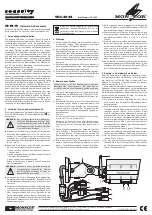
EXPLANATION OF TERMS
NTSC
National Television Standards Committee (NTSC) video format is primarily used in the
United States, Japan, Canada etc. The NTSC is a standard for television and videos,
which defines a composite video signal with a refresh rate of 60 half-frames
(interlaced) per second. Each frame contains 525 lines and can contain 16 million
different colors.
PAL
Phase Alternating Line (PAL), video format primarily used in Europe, excluding
France, as well as Australia and parts of the Far East. PAL delivers 625 lines at 50
half-frames per second.
RAW
The RAW image format is the data as it comes directly from the image sensor of the
camera. No in-camera processing is performed before transferring the image to
computer.
Shutter Speed
The camera’s shutter opens for a length of time to control the amount of light that
reaches the imaging element. The length of time that shutter blinds are open allowing
light to strike the image sensor is called as shutter speed.
White Balance
The human eye and brain adapt to changes in lighting conditions, not only to intensity,
but also to the color characteristic of the light source, so that colors of the objects look
normal or accurate. For example, a white object will appear white whether it is viewed
under sunlight, tungsten or fluorescent illumination. However, color film or digital
camera must be adjusted, so that colors will be represented accurately, under
different types of illumination. This adjustment is called white balance. The function to
adjust a white balance automatically is called automatic white balance.
106










































